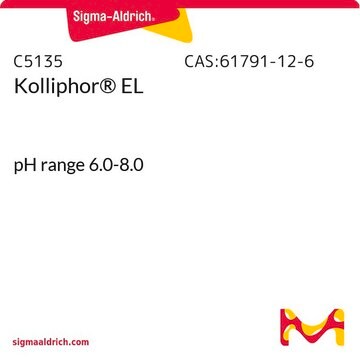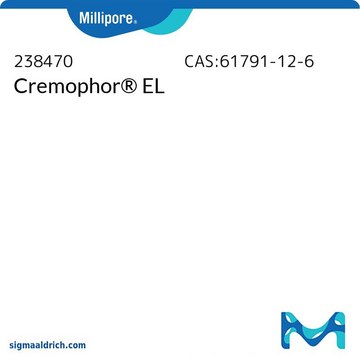Key Documents
A0580
Arachidonylethanolamide
≥97.0% (TLC), oil
Synonim(y):
Anandamide (20:4, n-6), AEA, Anandamide, Arachidonic acid N-(hydroxyethyl)amide
About This Item
Polecane produkty
Poziom jakości
Próba
≥97.0% (TLC)
Postać
oil
kontrola substancji
regulated under CDSA - not available from Sigma-Aldrich Canada
kolor
colorless to light yellow
rozpuszczalność
ethanol: soluble
gęstość
0.92 g/mL at 25 °C (lit.)
typ lipidu
omega FAs
Warunki transportu
dry ice
temp. przechowywania
−20°C
ciąg SMILES
O=C(CCC/C=C\C/C=C\C/C=C\C/C=C\CCCCC)NCCO
InChI
1S/C22H37NO2/c1-2-3-4-5-6-7-8-9-10-11-12-13-14-15-16-17-18-19-22(25)23-20-21-24/h6-7,9-10,12-13,15-16,24H,2-5,8,11,14,17-21H2,1H3,(H,23,25)/b7-6-,10-9-,13-12-,16-15-
Klucz InChI
LGEQQWMQCRIYKG-DOFZRALJSA-N
informacje o genach
rat ... Cnr1(25248)
Szukasz podobnych produktów? Odwiedź Przewodnik dotyczący porównywania produktów
Zastosowanie
- Interactions Between Endocannabinoid and Endogenous Opioid Systems Prospectively Influence Postoperative Opioid Use in Pregnant Patients Undergoing Cesarean Delivery: Investigates Arachidonylethanolamide′s interactions with opioid systems, providing insights that could lead to better management of postoperative pain and opioid use (Stone et al., 2024).
Działania biochem./fizjol.
Przestroga
Kod klasy składowania
11 - Combustible Solids
Klasa zagrożenia wodnego (WGK)
WGK 3
Temperatura zapłonu (°F)
Not applicable
Temperatura zapłonu (°C)
Not applicable
Środki ochrony indywidualnej
Eyeshields, Gloves, type N95 (US)
Certyfikaty analizy (CoA)
Poszukaj Certyfikaty analizy (CoA), wpisując numer partii/serii produktów. Numery serii i partii można znaleźć na etykiecie produktu po słowach „seria” lub „partia”.
Masz już ten produkt?
Dokumenty związane z niedawno zakupionymi produktami zostały zamieszczone w Bibliotece dokumentów.
Klienci oglądali również te produkty
Nasz zespół naukowców ma doświadczenie we wszystkich obszarach badań, w tym w naukach przyrodniczych, materiałoznawstwie, syntezie chemicznej, chromatografii, analityce i wielu innych dziedzinach.
Skontaktuj się z zespołem ds. pomocy technicznej













